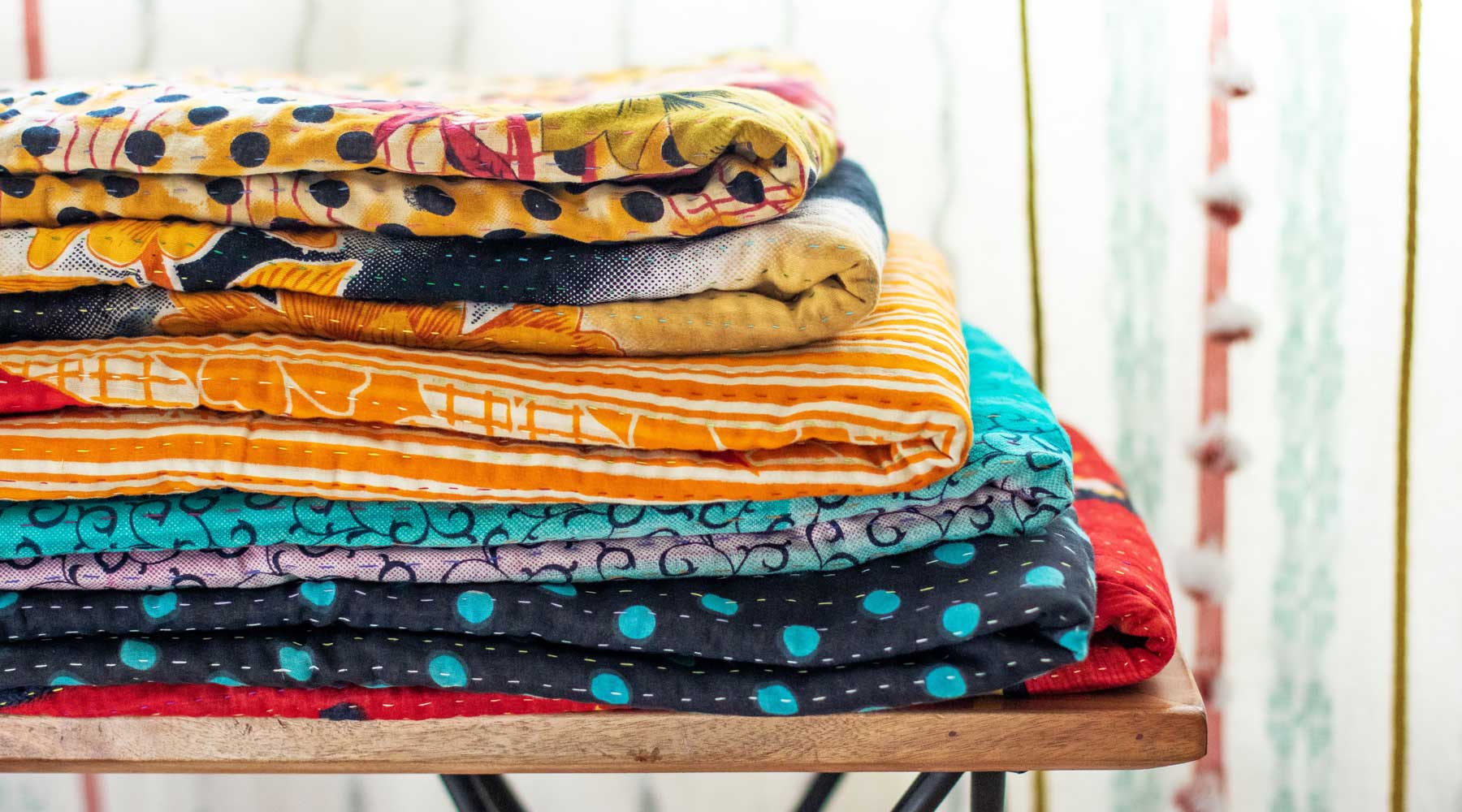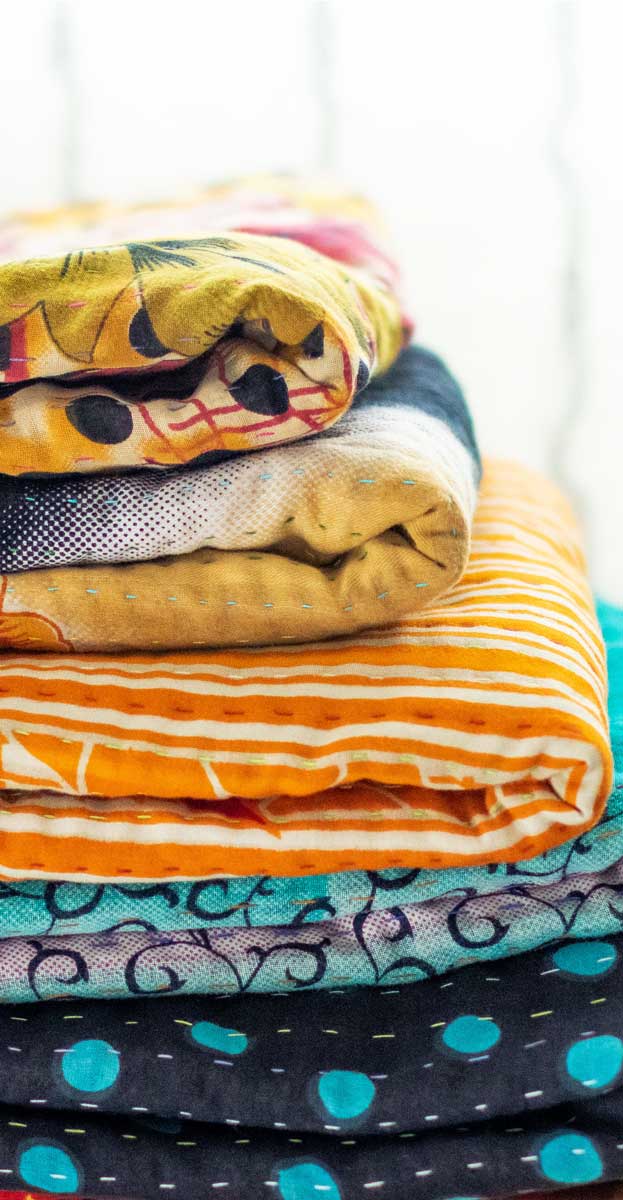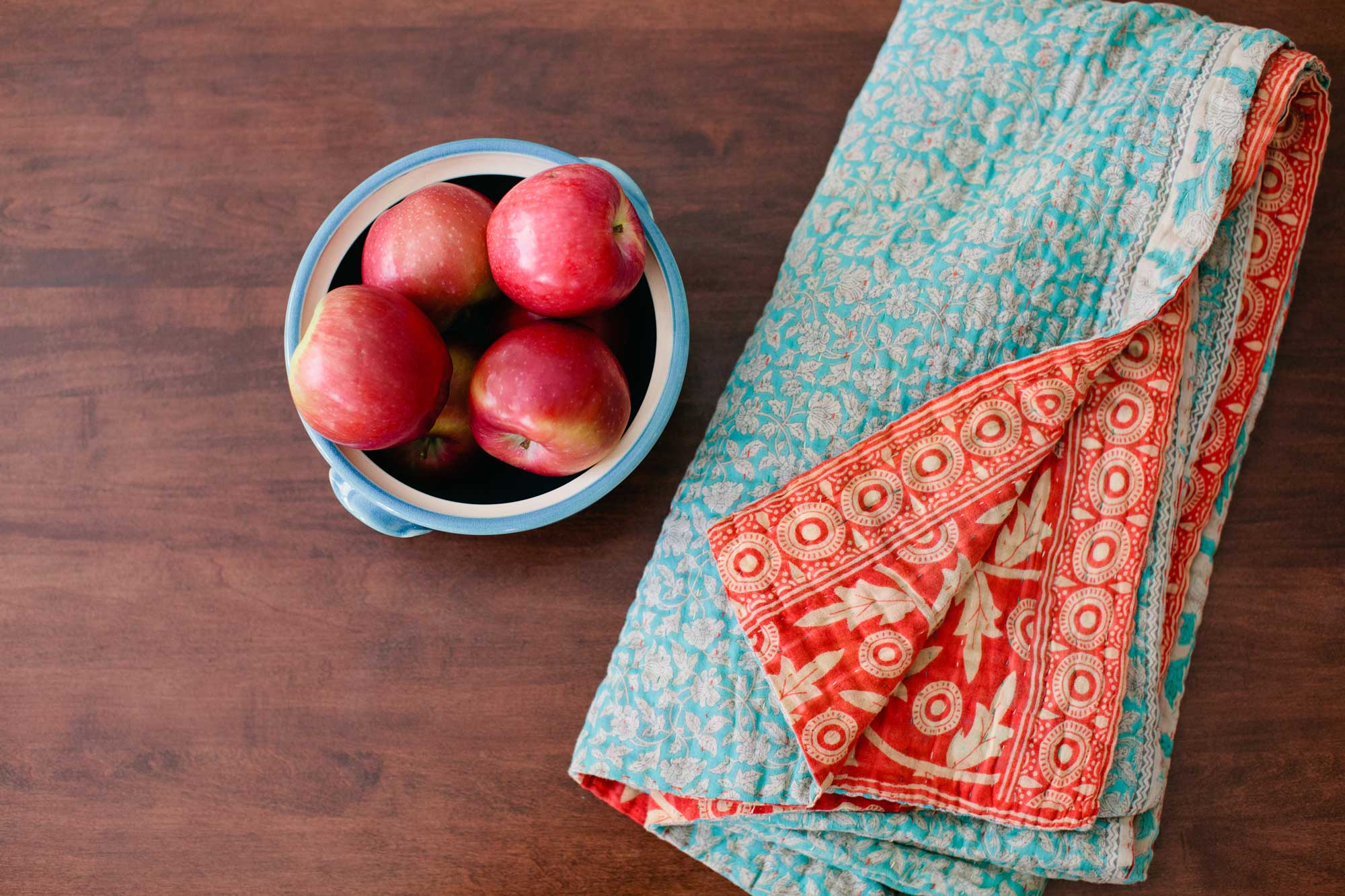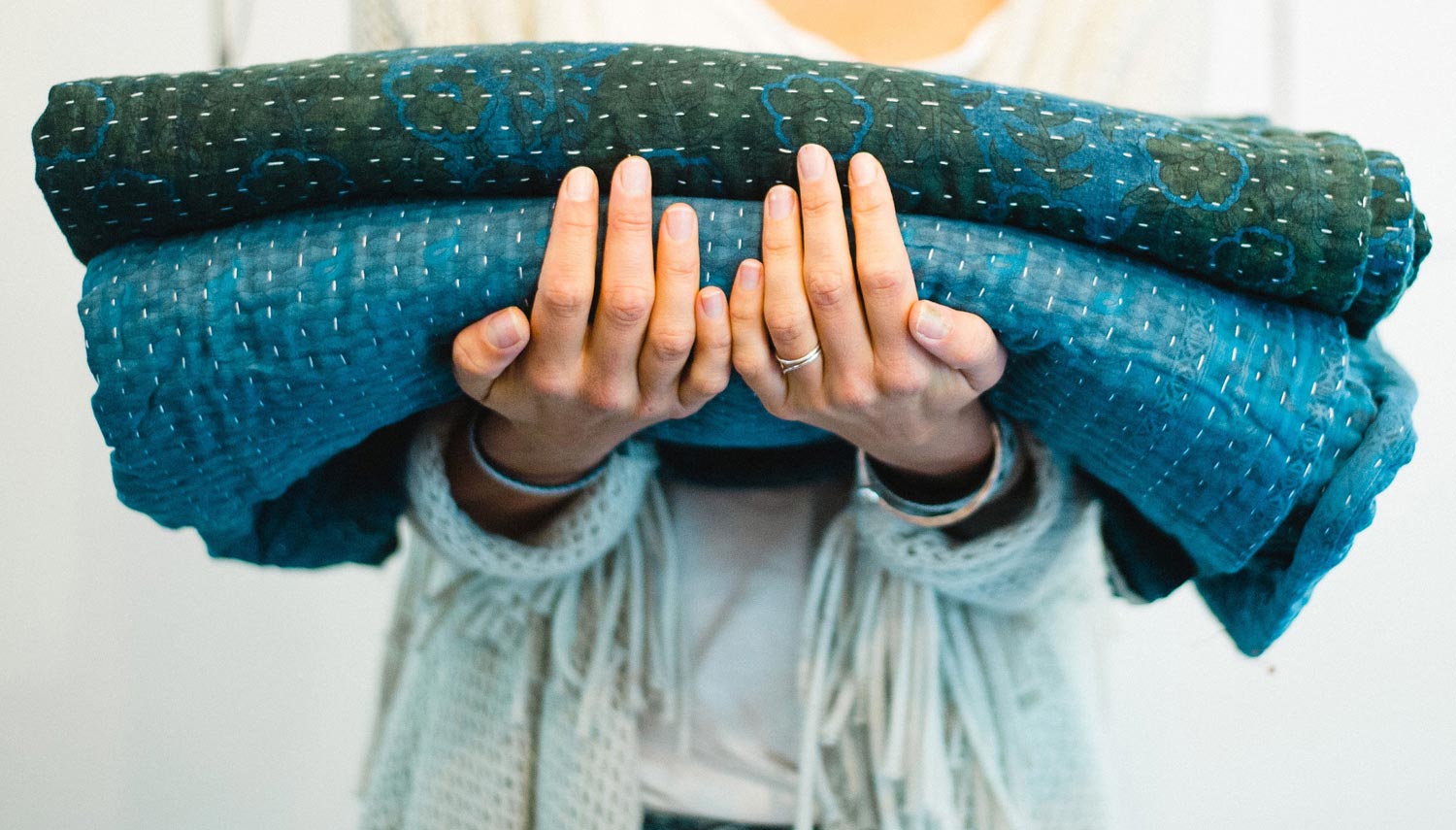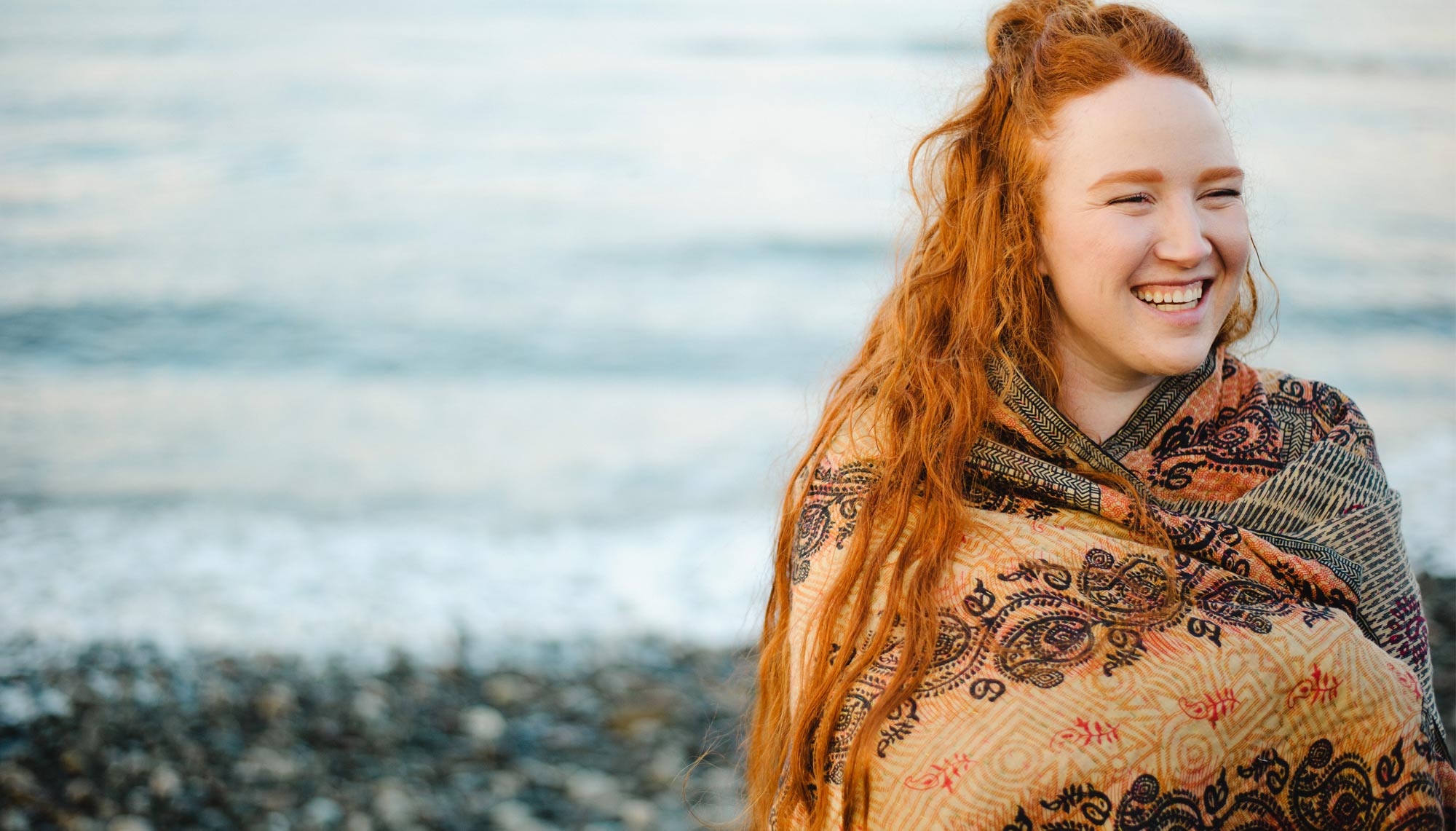What is Kantha?
What does the term “kantha” mean? What are kantha quilts?
Kantha (meaning: “patched cloth”) refers to both the tradition and craft of producing these unique, quilted blankets (making something useful and beautiful out of discarded items), as well as the stitch itself (a small, straight running stitch in Bengali embroidery). Kantha quilts are layers of cloth stitched together using this regional technique.
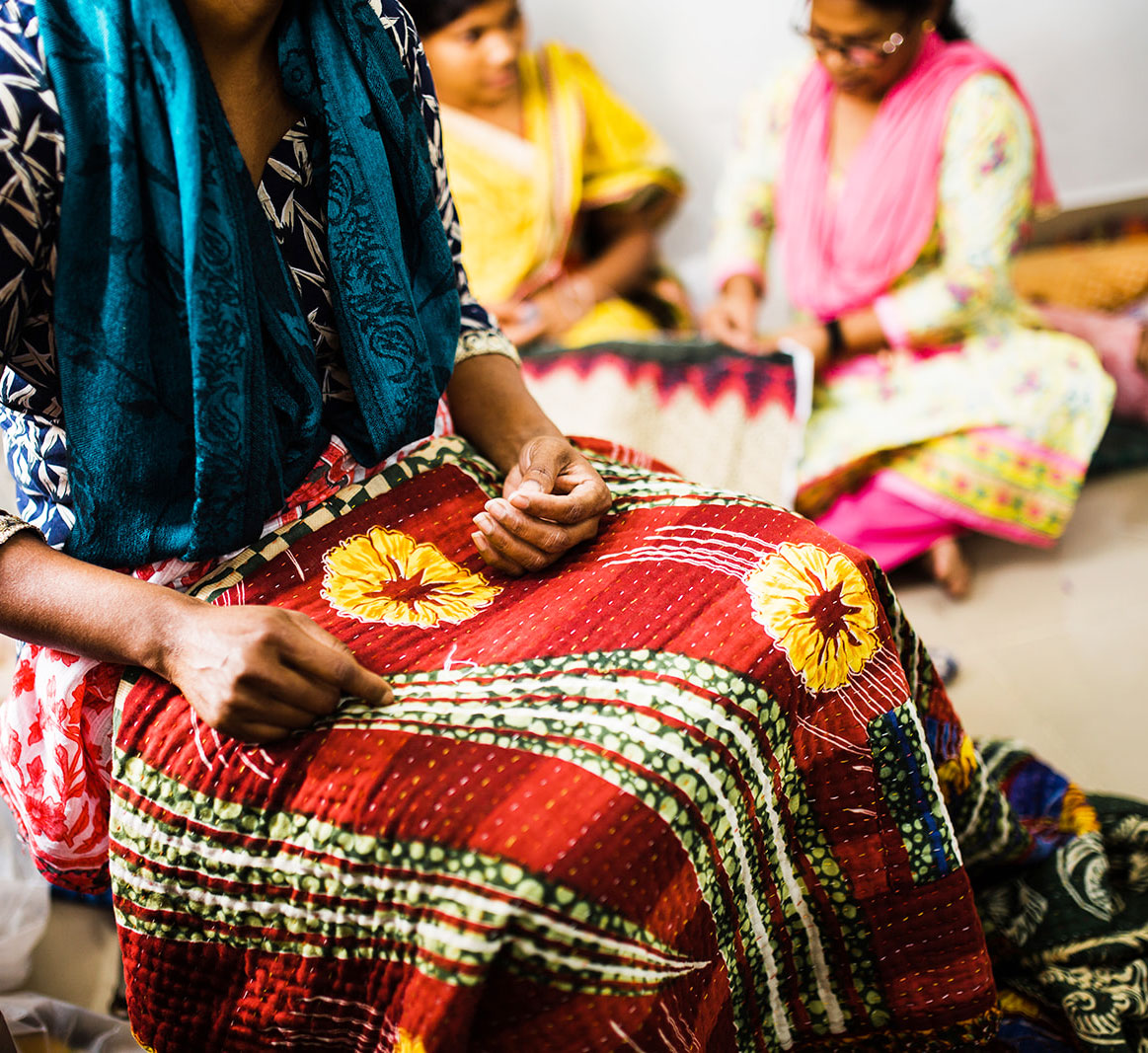
Let’s deep dive into everything there is to know about kantha!
・Where is Kantha From/Origins?
・What are Kantha Quilts Made of?
・How are Kantha Blankets Made?
・What are Kantha Used For?
・Are Kantha Quilts Soft? Warm? Thick? Ethical?
・Can You Wash a Kantha Quilt?
・How to Choose a Good Quality Kantha Quilt
Where is Kantha From?
Kantha is a traditional type of stitch & embroidered quilt native to rural, eastern South Asia — in particular Bangladesh and the neighboring Indian states of West Bengal and Odisha, along the Bay of Bengal. It is a craft of the Bengal region ("Bengali"), which is not the same as Bangladeshi (meaning: of the country of Bangladesh).
Most known embroidery stitches have been incorporated into the art of kantha, though at its essence, the kantha phor (stitch) is the simple running stitch.
At the most basic, kantha has always been a craft of repurposing the old (scraps & rags) into new — functional blankets to keep warm during colder months.
But, artistry has also been central to the craft. “Special kantha” went beyond practicality to mean much more to the makers & their descendents (or gift recipients). Styles of special embroidery & the techniques stitched into the cloth were immersed in folk beliefs, as well as in shared rituals and common cultural practices.
Different designs & embellishments may reflect prayers and vows of women, or storytelling of a woman’s family history. Blankets were often stitched as gifts for special occasions and personified the love & devotion of a mother, wife, or daughter for the family (or blanket recipient). Taught as a generational skill, elaborate kantha were a way for illiterate women to leave a lasting mark with symbolic well-wishing, desires, & storytelling.

